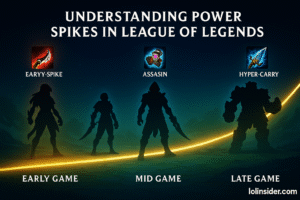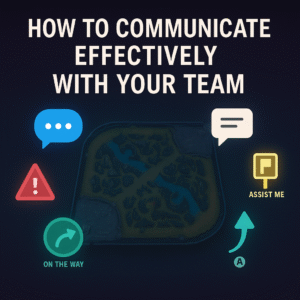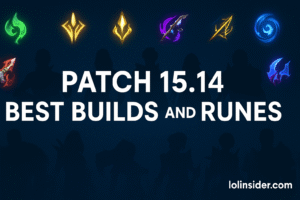Champion Pool Management: Why Less Is More is a fundamental concept for players who want to climb consistently in League of Legends. Many players make the mistake of trying to play every new champion, switching too often, or believing that a larger pool gives them more flexibility. In reality, mastering a smaller champion pool leads to faster improvement, more consistent performance, and higher win rates.
This article will explore why focusing on fewer champions is the key to success, how to build and refine your pool, and strategies to stay ahead in ranked without spreading yourself too thin.
1. The Psychology of Champion Pool Management
League of Legends is not only a mechanical game but also a mental one. Champion familiarity reduces stress, boosts confidence, and helps players focus on decision-making rather than remembering abilities. By narrowing your pool, you eliminate the mental clutter that comes with switching constantly.
2. The Myth of “More Options”
Many players think that having 20+ champions ready gives them flexibility. In truth, this dilutes practice time and prevents true mastery. Even at high elo, players stick to a small group of champions because depth always beats shallow variety.
3. Why Less Is More in Ranked Climbing
- Consistency: Fewer champions = predictable performance.
- Muscle Memory: Mechanics become automatic with repetition.
- Game Knowledge: You better understand matchups, power spikes, and item builds.
- Adaptability: You know how to win even from behind with your chosen picks.
4. Understanding Champion Mastery and Skill Expression
Champion mastery isn’t just about reaching Mastery Level 7. True mastery means knowing every cooldown, animation cancel, and situational strength. With a large pool, you never reach this level. By limiting your champions, you can push mechanical and macro knowledge to its peak.
5. Meta Shifts and Champion Pool Stability
Patches shift the meta, but that doesn’t mean you need to abandon your champions. Strong fundamentals, combined with niche mastery, often outweigh patch changes. Even in pro play, champions return to relevance after nerfs or buffs.
6. How Pro Players Manage Their Champion Pools
Professional players rarely master every champion. Instead, they specialize and keep a “ready” list depending on the patch. For example, a pro ADC may focus on 3 core champions and a few situational picks. Their depth of knowledge allows them to outperform opponents even in skill matchups.
7. Building the Ideal Champion Pool for Your Role
- Top Lane: 2 carry champions + 1 tank.
- Jungle: 2 meta clears + 1 pocket pick.
- Mid Lane: 2 control mages + 1 assassin or flex.
- ADC: 2 scaling hypercarries + 1 utility marksman.
- Support: 2 enchanters + 1 engage support.
This setup balances mastery with flexibility.
8. Narrow vs. Wide Pools: When to Adjust
- Narrow Pool (2–3 champs): Best for ranked climbing.
- Wide Pool (5–7 champs): Useful in clash, tournaments, or competitive play where bans target you.
9. Champion Pool Management Across Different Ranks
- Iron–Gold: Focus on mechanics, stick to 2 champions.
- Platinum–Diamond: Expand slightly to handle more drafts.
- Master+: Adapt pool to meta but never overextend.
10. The Role of Comfort Picks
Comfort picks—champions you always feel confident on—are critical. Even if they aren’t meta, your familiarity gives you an edge. Every player should have at least one reliable comfort champion.
11. Draft Phase and Champion Flexibility
Draft is where champion pool management shines. If you know 3–4 champions deeply, you can adapt to bans while keeping strong synergies with your team comp. A bloated pool, however, makes draft overwhelming.
12. Common Mistakes in Champion Pool Management
- Playing every free rotation champion.
- Dropping champions after one bad game.
- Overreacting to tier lists.
- Expanding pool mid-season without practice.
13. Tools to Track and Optimize Your Pool
- OP.GG Champion Stats – Track win rates and matchups.
- Mobalytics Champion Insights – Get skill breakdowns.
- League of Graphs – Analyze performance by role.
Use these tools to refine rather than expand your pool.
14. Adapting to Patches Without Losing Consistency
Stay updated, but don’t panic. If your main champion gets nerfed, test it before dropping it. Often, nerfs are small and don’t drastically impact ranked play.
15. Champion Pool Management in Esports and Pro Play
At Worlds, we see players specialize. Faker doesn’t play every champion; he plays a curated list suited for his team’s strategy. Pro play teaches us the same lesson: less is more.
16. FAQs About Champion Pool Management
Q: How many champions should I main?
A: Ideally 3–5, depending on role and rank.
Q: What if my champion gets banned?
A: Always keep one reliable backup.
Q: Should I learn off-meta champions?
A: Only if you enjoy them and can commit to mastering them.
Q: Can one-tricking still work in 2025?
A: Yes, many high elo players climb by one-tricking, but having a backup is recommended.
17. Final Thoughts: Why Less Is More
Champion Pool Management: Why Less Is More remains one of the most undervalued principles in League of Legends. Instead of chasing variety, commit to mastery. Fewer champions mean deeper knowledge, better mechanics, and more consistent results. Whether you’re in Bronze or pushing Challenger, narrowing your champion pool is the fastest path to climbing.







